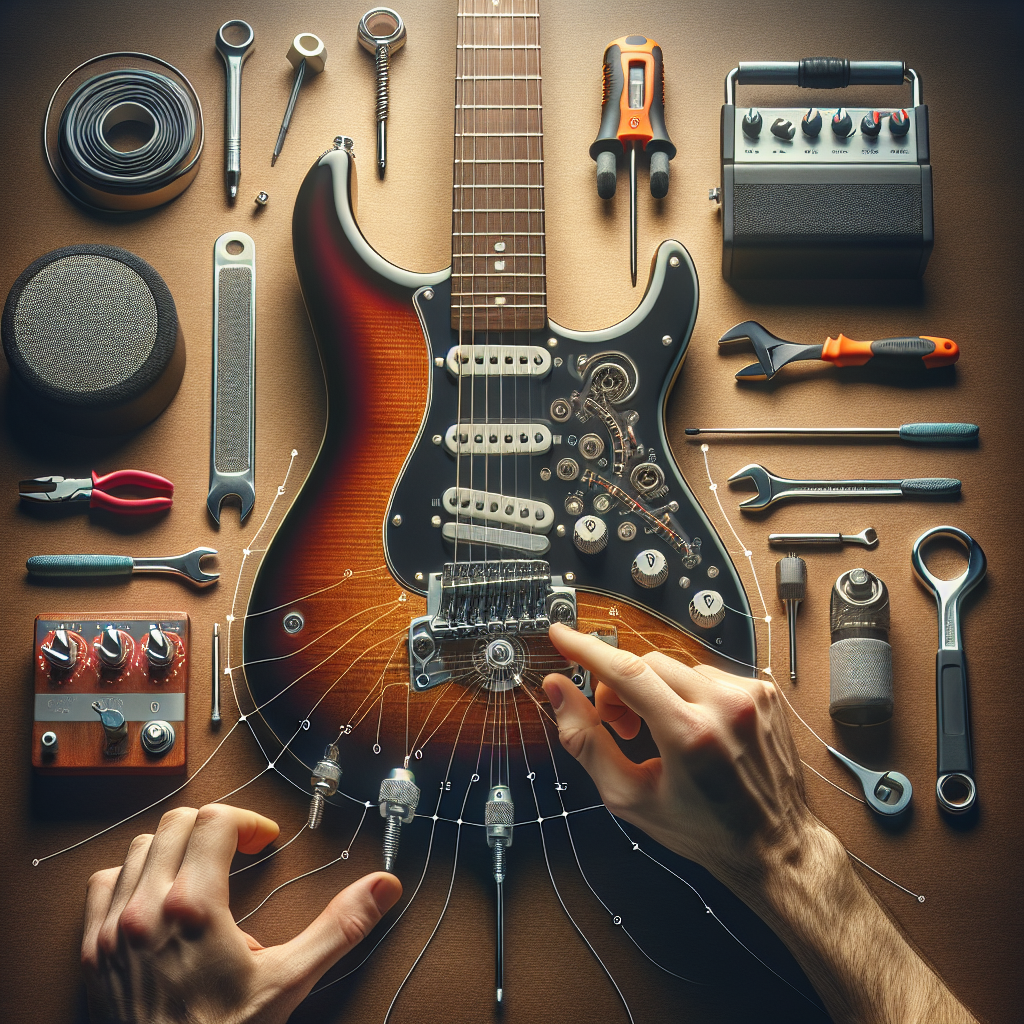
Setting Guitar Intonation: 6 Steps to Perfect Your Sound
For every guitarist, achieving the perfect sound is a never-ending pursuit. Among many aspects of guitar maintenance, setting the intonation stands as a crucial task. Guitar intonation refers to the instrument’s ability to stay in tune across the entire fretboard. Poor intonation can make your music sound off, even if the open strings are perfectly tuned. In this guide, we will explore the importance of intonation and provide you with a simple, six-step process to set your guitar’s intonation accurately.
Step 1: Tune Your Guitar
Before you start adjusting the intonation of your guitar, it’s essential to ensure that it’s in tune. Use a high-quality tuner and check each string. Remember, tuning is not just a one-time task. Since small adjustments can affect tuning, revisit this step occasionally throughout the process.
Step 2: Assess the Current Intonation
To check if your intonation is correct, play the 12th fret harmonic and compare it to the fretted 12th note on each string. If they match, your intonation is spot on. If the fretted note is sharper, you’ll need to make adjustments. Conversely, if the note is flat, your adjustments will go the other way.
Step 3: Tools You Will Need
Adjusting guitar intonation requires specific tools. At a minimum, you’ll need a screwdriver to adjust the saddles. Other helpful tools include a digital tuner with a strobe function and a capo, which can assist in verifying intonation accuracy.
Step 4: Adjust the Saddles
Each string’s saddle can be adjusted forward or backward to change the length of the string, which in turn alters the intonation. If your fretted note at the 12th fret was sharp, move the saddle backward. If it was flat, move it forward. Make small adjustments and retune before testing the intonation again.
Step 5: Recheck Your Adjustments
Once you’ve finished adjusting the saddles, it’s vital to double-check your work. Play the 12th fret harmonic and compare it to the fretted note again. If it’s still not perfect, repeat the adjusting process until you’re satisfied with every string.
Step 6: Test Your Guitar
Strumming some chords and playing scales are excellent ways to confirm if your intonation adjustments have paid off. Listen for any anomalies in the sound. If your guitar sounds harmonious across the fretboard, you’ve successfully set your guitar’s intonation!
FAQs
Q: What is guitar intonation?
A: Guitar intonation is the accuracy with which the instrument is in tune across the entire fretboard, ensuring that it sounds good no matter what notes you play.
Q: Why does guitar intonation matter?
A: Proper intonation ensures that your guitar will sound its best during performances and recordings. Without it, chords and notes can sound out of tune even when open strings are correctly tuned.
Q: How often should I check my guitar’s intonation?
A: It’s good practice to check your guitar’s intonation every time you change strings, after any large temperature or humidity changes, or if you notice tuning issues.
Q: Can old strings affect intonation?
A: Yes, old or worn-out strings can negatively affect intonation. If you’re having trouble setting intonation, consider restringing your guitar first.
Q: Can I set intonation with a digital tuner?
A: Yes, a digital tuner can help accurately assess and adjust your guitar’s intonation. Tuners with a strobe function are particularly useful for this task.
Q: Does the type of bridge affect intonation adjustment?
A: Yes, different bridges (fixed, floating, etc.) can require slightly different adjustment techniques. It’s essential to familiarize yourself with your bridge type before making any changes.
Conclusion
Setting your guitar’s intonation is a vital process that reveals the true sound potential of your instrument. With these steps, you can tackle this task confidently, ensuring your music is always on point. Remember to be patient and precise, as small adjustments can make a big difference. Whether you play a six-string acoustic or electric guitar, mastering intonation is key to achieving a harmonious sound.
For more on how to care for your guitar, visit Fender’s official guide on adjusting your guitar for further insights and tips.